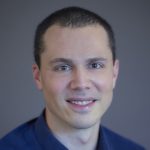Quantum News Briefs May 12: Quantum Bridge secures funding to build quantum repeaters for communication networks; SES and TESAT to develop payload for Europe’s first Quantum cryptography LEO satellite system EAGLE-1; Entangled quantum circuits at ETH Zurich + MORE

Quantum News Briefs May 12: Quantum Bridge secures funding to build quantum repeaters for communication networks; SES and TESAT to develop payload for Europe’s first Quantum cryptography LEO satellite system EAGLE-1; Entangled quantum circuits at ETH Zurich + MORE.
Quantum Bridge secures funding to build quantum repeaters for communication networks
Quantum Bridge, a startup making a range of advanced quantum- safe communications solutions, announced on May 11 that it has been awarded funding from the National Research Council of Canada (NRC) in the amount of $890,000 CAD ($700,000 USD). Quantum News Briefs summarizes the announcement.
The funding is part of a collaborative research agreement with the NRC’s Quantum Sensors Challenge program. The collaboration will see the development of the first all-photonic quantum repeater used to channel entanglement over very long distances.
Quantum repeaters are an essential component in building quantum-resilient internet and communications networks. These will become commonplace by the end of this decade, once the use of quantum computers becomes widespread, and communication networks need to be protected from these new and far more advanced security threats. Quantum networks like the kind envisioned by Quantum Bridge, will offer an array of valuable applications over the coming years. These include quantum key distribution, distributed quantum computing and blind quantum computing, among others.
“The NRC is a partner of choice for us. This collaboration is about far more than financing and access to facilities,” said Mattia Montagna, CEO at Quantum Bridge. “The NRC also brings extensive knowledge about quantum dot technology, which is the core technology upon which our quantum repeaters are being built. Today’s news signals a collaboration with the NRC to leverage our combined know-how in quantum optics and quantum communication, with their experience related to quantum dots. Our goal being to build a deterministic cluster state generator that can have multiple uses in the quantum industry.”
These quantum repeaters will use quantum dots as a single photon source to carry entanglement between the repeaters, and all across quantum-safe communication networks. When hit with a sequence of laser pulses, this semiconducting technology emits entangled photons, creating a bundle known as quantum cluster states. Those quantum cluster states allow quantum networks to be developed without quantum memories. Thus, providing significant advantages in the performance, speed and scalability of such networks.
“We believe this collaboration is an excellent example of the Quantum Sensors Challenge program contributing to the commercialization pillar of Canada’s National Quantum Strategy,” said Dr. Aimee K. Gunther, Deputy Director of the Quantum Sensors Challenge program. Click here to read announcement in-entirety.
SES and TESAT to develop payload for Europe’s first Quantum cryptography LEO satellite system EAGLE-1
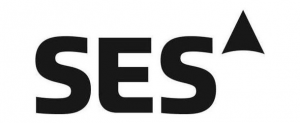 EAGLE-1 consortium lead SES has announced a new key partner, TESAT, responsible for developing and integrating the Quantum Key Distribution (QKD) payload for the EAGLE-1 satellite. The SES and TESAT partnership is aimed at achieving the next key milestone in building and implementing Europe’s pioneering quantum secure communications initiative EAGLE-1. Supported by the European Space Agency (ESA) and the European Commission, EAGLE-1 is a quantum key system integrating both space and ground segments that will deliver secure transmission of encryption keys across geographically dispersed areas and connect EU’s national quantum communications infrastructures for truly sovereign networks.
EAGLE-1 consortium lead SES has announced a new key partner, TESAT, responsible for developing and integrating the Quantum Key Distribution (QKD) payload for the EAGLE-1 satellite. The SES and TESAT partnership is aimed at achieving the next key milestone in building and implementing Europe’s pioneering quantum secure communications initiative EAGLE-1. Supported by the European Space Agency (ESA) and the European Commission, EAGLE-1 is a quantum key system integrating both space and ground segments that will deliver secure transmission of encryption keys across geographically dispersed areas and connect EU’s national quantum communications infrastructures for truly sovereign networks.
The EAGLE-1 project comprising satellite and ground infrastructure is developed by SES and its consortium of 20 European partners, and is co-funded by the ESA contribution of Germany, Luxembourg, Austria, Italy, the Netherlands, Switzerland, Belgium, and the Czech Republic under ARTES, as well as the European Commission through Horizon Europe.
Once launched in 2024, the EAGLE-1 satellite will complete three years of in-orbit mission. During the operational phase, the satellite will allow European Union governments and institutions as well as critical business sectors early access to long-distance QKD that would path the way towards an EU constellation enabling ultra-secure data transmissions.
Consortium member and Europe’s leading laser communication technology company TESAT will manufacture the QKD payload comprising the Scalable Optical Terminal SCOT80 to establish a secure optical link from space to ground, as well as the QKD module of the satellite.
The technology integrated into the EAGLE-1 system’s payload will include built-in redundancy and is specifically designed to be associated with the satellite communications and data transmission for such areas as government, telco operators, cloud providers and banking, to add guaranteed security of the cryptographic applications.
“EAGLE-1 is a project that will benefit the whole of Europe, and being able to work with the leading technology players in the market to co-develop it and together shape this innovative secure technology is a privilege to SES,” said Ruy Pinto, Chief technology Officer of SES. “The addition of the secure optical links and the actual QKD module brings us closer to implementation, testing and further scaling the technology, that can ultimately serve millions of users. This elevates secure communications to an entirely new level, supporting development of reliable pan-European quantum communications infrastructures.” Click here to read complete announcement.
Entangled quantum circuits at ETH Zurich
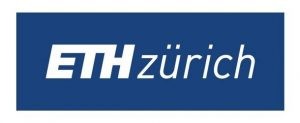 ETH Zurich researchers have succeeding in demonstrating that quantum mechanical objects that are far apart can be much more strongly correlated with each other than is possible in conventional systems. For this experiment, they used superconducting circuits for the first time. Quantum News Briefs summarizes.
ETH Zurich researchers have succeeding in demonstrating that quantum mechanical objects that are far apart can be much more strongly correlated with each other than is possible in conventional systems. For this experiment, they used superconducting circuits for the first time. Quantum News Briefs summarizes.
A group of researchers led by Andreas Wallraff, Professor of Solid State Physics at ETH Zurich, has performed a loophole-free Bell test to disprove the concept of “local causality” formulated by Albert Einstein in response to quantum mechanics. By showing that quantum mechanical objects that are far apart can be much more strongly correlated with each other than is possible in conventional systems, the researchers have provided further confirmation for quantum mechanics. The researchers were able for the first time to perform it using superconducting circuits, which are considered to be promising candidates for building powerful quantum computers.
The ETH researchers’ experiment confirms that superconducting circuits operate according to the laws of quantum mechanics too, even though they are much bigger than microscopic quantum objects such as photons or ions. The several hundred micrometre-sized electronic circuits made of superconducting materials and operated at microwave frequencies are referred to as macroscopic quantum objects.
Bell tests also have a practical significance. “Modified Bell tests can be used in cryptography, for example, to demonstrate that information is actually transmitted in encrypted form,” explains Simon Storz, a doctoral student in Wallraff’s group. “With our approach, we can prove much more efficiently than is possible in other experimental setups that Bell’s inequality is violated. That makes it particularly interesting for practical applications.”
After evaluating more than one million measurements, the researchers have shown with very high statistical certainty that Bell’s inequality is violated in this experimental setup.
Building the facility and carrying out the test was a challenge, Wallraff says. “We were able to finance the project over a period of six years with funding from an ERC Advanced Grant.” Just cooling the entire experimental setup to a temperature close to absolute zero takes considerable effort. “There are 1.3 tonnes of copper and 14,000 screws in our machine, as well as a great deal of physics knowledge and engineering know-how,” Wallraff says. He believes that it would in principle be possible to build facilities that overcome even greater distances in the same way. This technology could, for instance, be used to connect superconducting quantum computers over great distances. Click here to read ETH Zurich article in-entirety.
Eviden launches Qaptiva; quantum computing offering to enable software & hardware partner ecosystem
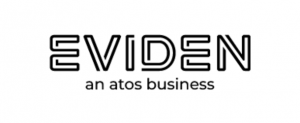 Eviden has launched Qaptiva, its new Quantum Computing offering to enable real world application development and usage, using best-of-breed quantum computing technologies.
Eviden has launched Qaptiva, its new Quantum Computing offering to enable real world application development and usage, using best-of-breed quantum computing technologies.
While some vertical markets are starting to show readiness to use quantum computing for problems addressed today by supercomputers, the customer’s focus is shifting from learning to developing and consuming quantum computing real life applications.
With Qaptiva, Eviden is embracing this new era by enabling a rich Software and Hardware partner ecosystem to use the Qaptiva Application development platform, offering corporate customers solutions to facilitate the development of tangible quantum applications, and run them in as-a-service or on premises modes.
Capitalizing on Eviden’s strong experience in hybrid computing, Qaptiva will help enterprises, organizations, and research centers worldwide to harness the power of quantum computing and take application development to the next level, to solve complex business and scientific challenges.
Capitalizing on Eviden’s strong experience in hybrid computing, Qaptiva will help enterprises, organizations, and research centers worldwide to harness the power of quantum computing and take application development to the next level, to solve complex business and scientific challenges.
Developing real-life applications using quantum computing-based paradigms requires building specialized, problem-solving-oriented set of software libraries for developers to use their own domain specific objects without being quantum physics specialists.
As such, Eviden is expanding its partners ecosystem to provide developers with a wide choice of quantum software libraries to increase value for its customers while offering different choices of hardware. To support the evolution of quantum software, the team has partnered with innovation-driven Quantum players like ColibrITD, QuantFI, QubitSoft, Qubit Pharmaceuticals, QuRISK and Multiverse Computing to integrate them in Qaptiva and to address industry-specific use cases related to automotive, defense, energy, finance, life science and retail. For quantum computing hardware, after the signature of an agreement with its forward-thinking partner IQM Quantum Computers in 2022, Eviden is now also collaborating with French technology leaders Quandela and Pasqal for joint commercial offers. Click here to read announcement entirety.
Sandra K. Helsel, Ph.D. has been researching and reporting on frontier technologies since 1990. She has her Ph.D. from the University of Arizona.



















